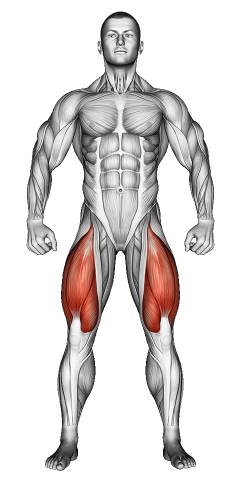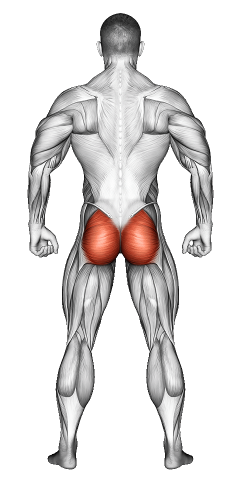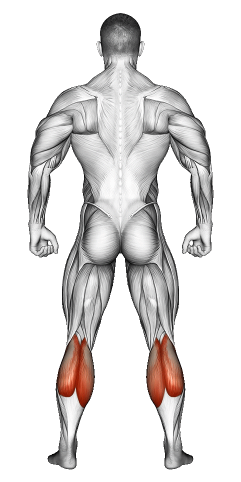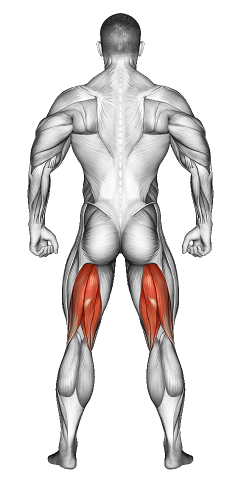Dumbbell Sumo Squat: Video Tutorial & Exercise Guide

Written By: Claude Michael
Updated: Oct 13, 2024
| Workout | Dumbbell Sumo Squat |
| Primary Muscle Group | Quads |
| Secondary Muscle Group | Glutes, Calves Hamstrings |
| Equipment Required | Dumbbell |
| Force Type | Push |
| Mechanics | Compound |
| Exercise Type | Strength |
| Difficulty | Intermediate |
Dumbbell Sumo Squat: Video Tutorial & Exercise Guide
- 1.Dumbbell Sumo Squat: Muscle Groups
- -1.1Primary Muscle Group
- -1.2Secondary Muscle Group
- 2.Dumbbell Sumo Squat: Step-by-Step Guide
- 3.Dumbbell Sumo Squat: Overview
- 4.Dumbbell Sumo Squat: Benefits
- 5.Dumbbell Sumo Squat: Pro Tips & Advanced Techniques
- 6.Dumbbell Sumo Squat: Progression Plan
- 7.Dumbbell Sumo Squat: Frequently Asked Questions (FAQs)
Secondary Muscles Group
Dumbbell Sumo Squat: Step-by-Step Guide
- Step 1: Stand with your feet wider than shoulder-width apart, toes pointing slightly outward. Hold a dumbbell with both hands, letting it hang down between your legs.
- Step 2: Keep your chest lifted and your back straight. Engage your core as you begin to lower your body by bending your knees and hips, pushing your knees outward in line with your toes.
- Step 3: Lower yourself until your thighs are parallel to the ground or slightly below, ensuring your knees stay aligned with your toes. The dumbbell should remain between your legs throughout the movement.
- Step 4: Push through your heels and squeeze your glutes as you stand back up to the starting position, keeping your back straight and core engaged.
- Step 5: Repeat for the desired number of reps, maintaining control and a steady pace throughout the exercise.
Dumbbell Sumo Squat: Overview
The Dumbbell Sumo Squat is a powerful lower-body exercise that targets the inner thighs, quadriceps, hamstrings, and glutes. The wider stance helps focus more on the adductors (inner thigh muscles) while still engaging the glutes and quads effectively. Holding a dumbbell adds resistance, increasing the challenge and building strength.
This exercise is suitable for all fitness levels and can be modified by adjusting the weight or depth of the squat. It’s an excellent choice for strengthening the legs and improving flexibility in the hips and groin.
Dumbbell Sumo Squats: Benefits
Dumbbell Sumo Squats are great for building strength in the lower body, particularly in the adductors (inner thighs), glutes, and quads. The wider stance improves hip mobility and flexibility, making it a functional exercise that enhances range of motion.
This movement also promotes better balance and core engagement since you must maintain an upright posture throughout the squat. The added resistance from the dumbbell makes it an effective exercise for increasing muscle tone and overall lower body strength.
Dumbbell Sumo Squat: Pro Tips & Advanced Techniques
Keep your chest lifted and your core tight to prevent leaning forward during the squat. Focus on pushing your knees outward to ensure they align with your toes, which will help protect your knees and engage your inner thighs more effectively. For an added challenge, increase the weight of the dumbbell or slow down the lowering phase (eccentric) to increase time under tension. You can also add a pulse at the bottom of the squat for extra intensity.
Dumbbell Sumo Squats: Progression Plan
Beginner
Intermediate
Advanced
Dumbbell Sumo Squat: Frequently Asked Questions (FAQs)
What muscles do Dumbbell Sumo Squats target?
+Dumbbell Sumo Squats primarily target the inner thighs (adductors), quadriceps, glutes, and hamstrings. They also engage the core for stability.
Are Dumbbell Sumo Squats suitable for beginners?
+Yes, Dumbbell Sumo Squats are beginner-friendly. Start with a lighter dumbbell or just your body weight to practice form before progressing to heavier weights.
How often should I perform Dumbbell Sumo Squats?
+Incorporate this exercise into your lower body workout 1-2 times per week, allowing adequate recovery time for your legs between sessions.
What common mistakes should I avoid?
+Avoid letting your knees collapse inward or leaning too far forward. Keep your knees in line with your toes and maintain an upright posture to protect your back and knees.
Can I use heavier weights for Dumbbell Sumo Squats?
+Yes, using heavier weights will increase the intensity of the exercise and promote muscle growth. Start with a manageable weight and increase it as your strength improves.
Share
Don’t Wish for It, Work for It – Join the FlexXP Newsletter Today!
Thank you for signing up for the FlexXP Newsletter!
This site is protected and the Google Privacy Policy and Terms of Service apply.



